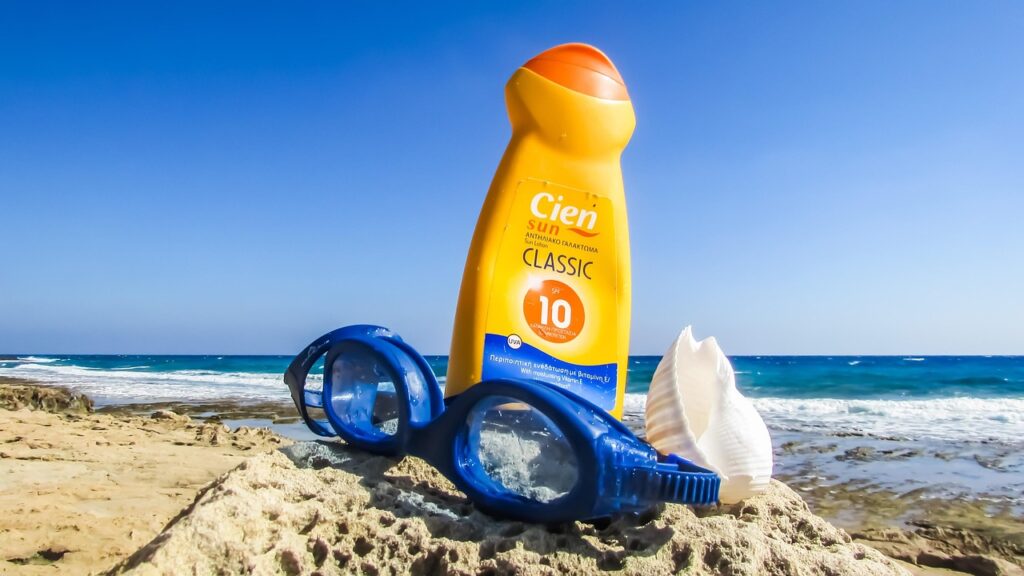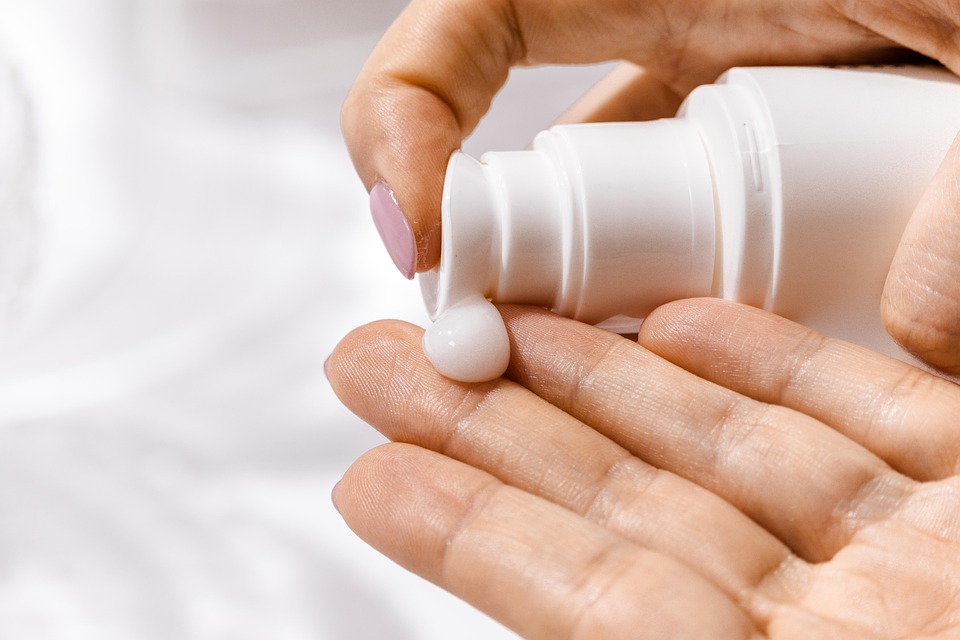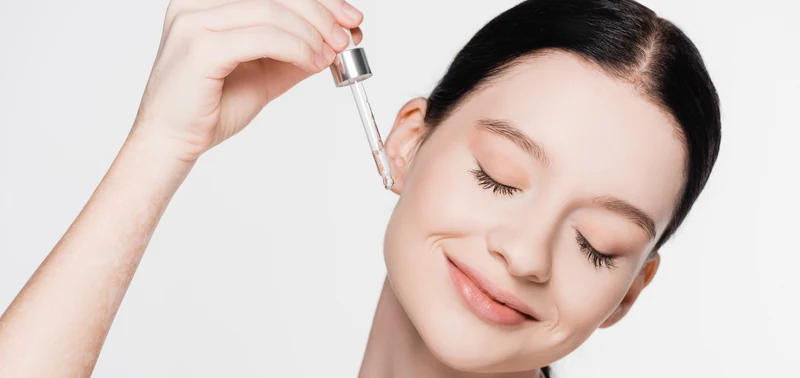Sun protection is non‑negotiable, yet daily sunscreen use still feels like a chore for many people. Greasy textures, white cast, breakouts, makeup pilling—sound familiar? Enter tinted sunscreens: the multitasking hybrid that merges broad‑spectrum UV defense with complexion‑evening pigment, often cutting down on steps in your morning routine. Whether you wear makeup daily or prefer a natural look, a good tinted sunscreen can replace (or enhance) foundation, blur imperfections, reduce redness, and protect against more than just UV rays. This guide walks you from basic awareness to full benefits—how they work, who needs them, what to look for, top picks, application tips, and common mistakes to avoid.
Understanding What Tinted Sunscreen Actually Is
A tinted sunscreen is a sun protection product that contains the usual UV filters plus cosmetic pigments (often iron oxides) that provide sheer to buildable skin tone coverage. Think of it as the midpoint between plain sunscreen and a skin tint, BB cream, or light foundation.
How Tinted Sunscreens Differ from Regular Sunscreen
- Cosmetic Coverage: Offers color correction, evening skin tone, and light camouflage of redness or discoloration.
- Reduced White Cast: Pigment helps neutralize the chalky effect common with high‑zinc mineral formulas.
- Visible Light Defense: Many tinted formulas containing iron oxides help defend against visible light and may be beneficial for hyperpigmentation concerns.
- Makeup-Simplifying: Can double as primer, base makeup, or light foundation substitute.
Tinted Sunscreen vs BB/CC Cream vs Skin Tint

| Product Type | Primary Goal | SPF Reliability | Coverage Level | Who It Suits |
|---|---|---|---|---|
| Tinted Sunscreen | Sun protection first; cosmetic enhancement second | Typically tested to meet labeled SPF if applied properly | Sheer–light; some buildable | Everyday users who want protection + quick even tone |
| BB/CC Cream | Makeup + skincare hybrid | Often contains SPF but not always applied in sufficient amount for full label protection | Light–medium | Makeup wearers wanting more coverage |
| Skin Tint / Tinted Moisturizer | Cosmetic glow + hydration | SPF varies; may not be primary | Sheer | Minimal makeup fans |
The Science Behind Tinted Sunscreens
UV Filters: Mineral, Chemical, or Hybrid
Tinted sunscreens can use mineral (physical) filters like zinc oxide and titanium dioxide, chemical filters like avobenzone, octisalate, or newer advanced filters (depending on region), or a hybrid blend. Mineral filters are often preferred for sensitive or acne‑prone skin, while hybrids can improve texture and wear.
Iron Oxides and Visible Light Protection
Iron oxides—the pigments that give most tinted sunscreens their color—do more than match skin. They help reduce the impact of visible light, including high‑energy visible (HEV) or blue light, which has been associated with worsening hyperpigmentation in deeper skin tones and melasma patients. While iron oxides do not replace UV filters, they add a meaningful layer of defense in real‑world conditions (think: sunlight coming through windows, screens, and reflective environments).
SPF, PA, and Broad-Spectrum Claims—What Matters
- SPF (Sun Protection Factor): Measures UVB protection (burning rays).
- UVA Rating (PA+, PPD, Boots stars, or “Broad-Spectrum”): Indicates defense against skin‑aging UVA rays.
- Reapplication: Even the best formula fails if under‑applied or not refreshed every 2 hours outdoors.
Why Choose a Tinted Sunscreen? Key Benefits

Benefit 1: Cuts Down Your Morning Routine
Moisturizer + sunscreen + foundation can become a 3‑step marathon. A well‑formulated tinted sunscreen can hydrate (if emollients are included), protect, and even out tone in one swipe—time saved, excuses gone.
Benefit 2: Cosmetic Confidence Without Heavy Makeup
Tinted sunscreen gives that real‑skin but better finish. It blurs minor redness, softens discoloration, and leaves a natural, breathable look—great for video calls, school runs, and no‑makeup days.
Benefit 3: Better Compliance = Better Protection
People are far more likely to apply (and reapply) products that improve how they look. If you like how your sunscreen looks on skin, you’ll wear more of it—and that means better long‑term sun defense.
Benefit 4: Visible Light & Pigmentation Support
For those dealing with melasma, post‑inflammatory marks, or dark spots, iron‑oxide‑tinted formulas offer an added layer beyond UV filtering alone.
Benefit 5: Makeup-Friendly Layering
Most modern tinted sunscreens play nicely under or in place of foundation. Many can be set with powder or layered with concealer for more coverage.
Who Should (and Shouldn’t) Use Tinted Sunscreens?
Great For:
- People who hate white cast from mineral sunscreens.
- Busy routines needing fewer products.
- Uneven tone or redness needing light correction.
- Melasma or hyperpigmentation where visible light defense helps.
- Sensitive skin users who prefer mineral tints over chemical filters.
Proceed with Caution If:
- You need full glam coverage—you may still want foundation.
- You’re very fair or very deep and struggle to find a matching tint (though flex‑tone tech is improving).
- You’re extremely oily—some hydrating tints may slide; look for matte or oil‑control versions.
How to Choose the Right Tinted Sunscreen: A Buyer’s Checklist

Use this checklist when comparing formulas online or in‑store.
1. Confirm Real Sun Protection Specs
- SPF 30 or higher for daily; SPF 50 for intense sun.
- Look for “broad‑spectrum” or specific UVA protection ratings (PA+++, PPD 16+, etc. where available).
2. Filter Type & Skin Sensitivity
- Mineral only (zinc/titanium): Often best for reactive, post‑procedure, rosacea, or acneic skin.
- Hybrid: Better spreadability, often more elegant finish.
- Chemical dominant: Lightweight textures; check for stinging around eyes if sensitive.
3. Shade Range & Flex Pigments
- Single “universal tint” may lean too peach, too gray, or too warm. Patch test.
- Newer “tone‑adapting” or “flex” pigments self‑adjust across multiple undertones—good for fluctuating tans.
4. Finish & Coverage Goals
- Dewy glow? Choose hydrating silicone or oil‑rich bases.
- Matte or semi‑matte? Look for oil‑absorbing powders or gel‑cream textures.
- Buildable? Some layer like light foundation when applied in two passes.
5. Skin Concerns
- Acne-prone: Non‑comedogenic claims, oil‑free, matte dry‑down.
- Dry / mature skin: Added ceramides, glycerin, squalane, or hyaluronic acid.
- Redness / rosacea: Mineral filters + calming ingredients (niacinamide, allantoin).
- Pigmentation: Iron-oxide heavy, high UVA rating.
6. Lifestyle Fit
- Water/sweat resistance for outdoor sports.
- Fragrance-free if reactive.
- Travel size options if you reapply on the go.
Application: Getting Full SPF from a Tinted Formula
You only get the labeled SPF if you apply the tested amount—roughly 1/4 teaspoon (about 1.25 mL) for face + neck, or the two-finger rule (index + middle finger length stripe). Because tinted sunscreens have pigment, people often apply less to avoid heaviness—don’t! Instead, try layering.
Step-by-Step Daily Application
- Prep: Cleanse and apply lightweight moisturizer if needed.
- Measure: Dispense ~two full finger lengths of product.
- Dot Method: Apply to forehead, cheeks, nose, chin, ears, neck.
- Blend Gently: Use fingers; avoid dragging. Some patting helps prevent streaks.
- Let Set: Give 3–5 minutes to dry before adding concealer or powder.
Build for Coverage Without Underdosing SPF
- Apply full sunscreen layer first for protection.
- Add a second light cosmetic pass to even tone where needed.
- Spot‑conceal dark marks instead of skimping on sunscreen.
Reapplication Hacks (Real Life!)
- Powder SPF touch-ups: Use mineral SPF powder over your tint mid‑day.
- Cushion compact re‑ups: Some tinted SPF cushions make mobile reapplication easier.
- Mix & Dab: Blend a pea‑sized amount of tinted sunscreen with setting spray on a sponge; press over makeup.
Product Roundup: Standout Tinted Sunscreen Categories

(Brand availability varies by region; always confirm local formulas and SPF ratings.)
Dermatologist-Favorite Everyday Tinted Mineral
A sheer, fragrance‑free zinc oxide tint that calms redness and suits sensitive or acne‑prone skin. Semi‑matte, layers well under makeup.
High UVA + Pigment Boost for Pigmentation Concerns
Look for iron‑oxide‑rich, broad‑spectrum SPF 50 formulas marketed to melasma patients. Often come in multiple tone‑adaptive shades.
Drugstore Budget Win
Large tube, lightweight mousse texture, matte finish ideal for humid climates. Good for oily/combo skin; sets well with powder.
Glow Finish + Makeup Hybrid
Dewy, light‑reflective base with skincare actives + tint. Ideal for dry, dull, or mature skin needing radiance.
Sport/Outdoor Water-Resistant Tint
SPF 50, sweat/water resistant, neutral tint that won’t run into eyes easily—great for hiking, sports days, or beach trips.
Quick Comparison Table of Common Tinted Sunscreen Styles
(Examples are representative; check specific regional product labels.)
| Category | Typical Filters | Finish | Coverage | Skin Type Match | Notes |
| Sensitive Mineral Tint | Zinc Oxide 10–20% | Semi‑matte | Sheer‑light | Sensitive / Acne / Rosacea | Low irritant; may need extra hydration |
| Tone-Adaptive Pigment Shield | Mineral + Iron Oxides | Natural | Light | Hyperpigmentation / Melasma | Helps visible light defense |
| Budget Matte Mousse | Hybrid | Matte | Light | Oily / Humid climates | Good shine control |
| Radiant Skin Tint SPF | Hybrid | Dewy | Light‑medium | Dry / Mature | Makeup‑friendly glow |
| Sport Wear Tint | Mineral or Hybrid | Natural‑matte | Sheer | Active / Outdoor | Often water resistant |

Common Mistakes with Tinted Sunscreens (and How to Fix Them)
Mistake 1: Applying Too Little (For Fear of Looking Orange)
Fix: Apply full protection layer; sheer out edges with damp sponge. Choose a closer shade match.
Mistake 2: Relying on Makeup with SPF Instead
BB creams and foundations labeled SPF are rarely applied at protective amounts. Always start with sunscreen.
Mistake 3: Skipping Reapplication on Makeup Days
Use SPF powders, spray-on mineral mists, or cushion tints to refresh.
Mistake 4: Ignoring Neck, Ears, and Hairline
Blend down and around. Pigmented streaks at jawline are avoidable if applied in dots and blended while still wet.
Mistake 5: Using Expired Product
SPF efficacy and pigment stability drop over time. Mark open date; replace yearly or sooner if formula separates.
Seasonal & Lifestyle Tips
Hot, Humid Weather
Choose oil‑free or matte gel‑cream tints. Set with oil‑absorbing powder mid‑day.
Dry, Cold Climates
Layer hydrating serum + moisturizer under your tint. Consider radiant finish formulas.
Work‑From‑Home / Indoor Days
Still wear sunscreen! UVA penetrates windows, and visible light exposure continues indoors. A tinted sunscreen gives screen‑ready complexion with minimal effort.
Modest Wear / Covered Neck Areas
If clothing shields the neck but face remains exposed, focus application density on the face and around the edges of scarves or hijabs where sunlight reflects.

FAQs About Tinted Sunscreens
Do I Still Need Makeup Primer?
Often no. Many silicone‑based tinted sunscreens double as primer. Test longevity under your usual makeup.
Can I Mix Tinted Sunscreen with Foundation?
You can, but doing so dilutes the SPF. Better: apply sunscreen fully, then mix foundation with a pea of tint for tone continuity.
Is SPF in My Foundation Enough If It’s SPF 30?
Only if you apply a full, tested amount (rare). Use a dedicated sunscreen layer first.
Will Tinted Sunscreens Break Me Out?
Look for non‑comedogenic, oil‑free, or mineral formulas. Patch test for 3–5 days.
Why Does My Tint Look Too Warm?
Iron oxides can run warm. Try mixing with a pea of untinted mineral sunscreen or set with a neutral powder.
From Awareness to Action: Your Next Steps
- Assess your current sunscreen: Does it leave a white cast? Do you skip it?
- Pick your priority: Sensitive? Oily? Need pigment correction?
- Patch test two formulas: Wear full day; check comfort, shade, and shine.
- Lock in habit: Keep your tinted sunscreen near your toothbrush or kettle—visual cue = daily use.
- Reapply smart: Keep portable SPF (stick, cushion, or powder) in your bag.
Consistent daily sunscreen use is the single best anti‑aging, anti‑damage habit you can build. A tinted option removes friction by combining beauty and protection—so you actually wear it. Your future skin will thank you.
Short SEO Snippets You Can Use

Primary Meta Description: Discover the best tinted sunscreens for everyday wear—no white cast, no clogged pores. Even tone + broad‑spectrum protection in one step.
Alternate Snippet (Oily Skin): Matte tinted sunscreens that control shine, protect against UV + blue light, and won’t clog pores.
Alternate Snippet (Pigmentation): Iron‑oxide tinted sunscreens that help shield against visible light and support melasma care.




